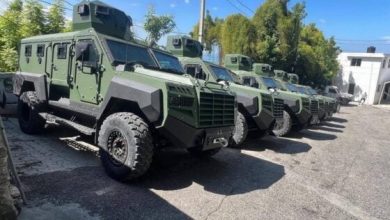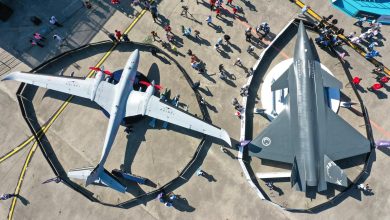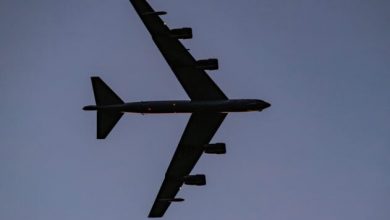China’s new carrier-based early warning aircraft nicknamed “Nezha”

China is drawing new attention to the KJ-600, its carrier-borne early warning and control aircraft, following the official commissioning of the country’s third aircraft carrier, Fujian.
The aircraft was first unveiled as part of the Fujian’s air wing during China’s V-Day military parade in Beijing and has since been discussed in greater detail in official media.
In an interview with China Central Television, Geng Yansheng, head of the First Aircraft Institute under the state-owned Aviation Industry Corporation of China, described the KJ-600’s cultural nickname drawn from Chinese mythology. Geng said the aircraft is referred to as “Nezha” because of how its engines, landing gear and nose resemble the three heads associated with the character. He added that the two foldable wings and four vertical tails “resemble Nezha’s six arms,” while the radome and red fuselage markings evoke elements of Nezha’s legendary artifacts. The high-speed rotation of the propellers was compared to the “wind-and-fire wheels” from the myth.
The discussion of the nickname accompanied a broader explanation of the aircraft’s operational role. According to the CCTV report, the KJ-600 is designed to act as an airborne command post for carrier groups. The aircraft is intended to detect, sense, form, and distribute situational awareness information to support fleet operations. The report said the platform can also be used for non-military missions, including coordinating search and rescue efforts and managing airspace control.
Geng emphasized that the most prominent visual feature of the aircraft, its large radar dome, is tied directly to its mission. He said the radome houses early warning antennas, and that to achieve a long detection range, the “frontal dimensions of the early warning antennas have been maximized.” He added that the dome pushes the limits of the aircraft’s center of gravity, aerodynamic balance and overall controllability due to its size relative to the airframe.
Zhang Xuefeng, identified as a Chinese military affairs expert, explained the operational value of the antenna configuration in comments to the Global Times. He said the KJ-600 can be regarded as a “force multiplier” for carrier-based aircraft by providing early detection support. While surface ships carry long-range radars, Zhang stated that they are constrained by the curvature of the Earth when trying to detect extremely low-flying targets. “A key function of carrier-based early warning aircraft is to detect these ultra-low-altitude targets,” he said. He noted that fixed-wing early warning aircraft have longer endurance and can carry larger radars, allowing detection of sea-skimming threats from greater distances.
The aircraft’s engine was also described as purpose-built for carrier operations. Geng said the engine requires corrosion resistance due to the maritime environment and must be able to perform rapid power increases during wave-off maneuvers should a landing attempt fail. He explained that the engine components are designed to withstand the stresses of catapult takeoffs, arrested recoveries and impacts during deck operations.





